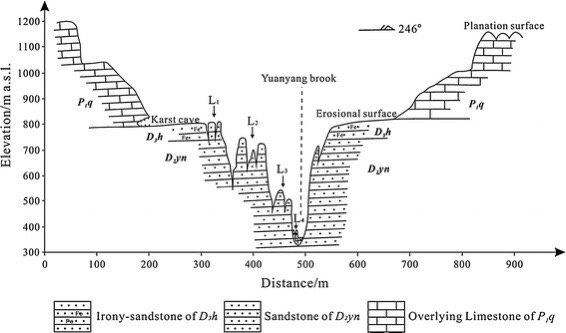
What is the Geomorphology of Zhangjiajie?
About Zhangjiajie National Forest Park
Zhangjiajie National Forest Park, located in the Hunan Province of China, is a UNESCO World Heritage Site renowned for its breathtaking natural beauty. The park's most striking feature is its unique and awe-inspiring geomorphology, which has captivated visitors for centuries.
The Formation of Zhangjiajie's Unique Landscape
The extraordinary landscape of Zhangjiajie is the result of a complex interplay of geological processes spanning millions of years.
Geological History
The geological history of Zhangjiajie can be traced back to over 400 million years ago, during the Devonian period.
- Sedimentation: During this period, the region was submerged beneath a vast shallow sea. Over millions of years, layers of quartz sandstone, the bedrock of Zhangjiajie's peaks, were deposited on the seabed.
- Uplift: Approximately 300 million years ago, during the formation of the supercontinent Pangaea, tectonic forces caused the region to uplift, gradually lifting the sandstone layers above sea level.
- Erosion and Weathering: Once exposed, the sandstone became subjected to the relentless forces of erosion and weathering. Physical and chemical weathering, primarily driven by water and wind, began to carve into the sandstone.
The Role of Quartz Sandstone
The specific type of sandstone found in Zhangjiajie plays a crucial role in the formation of its iconic peaks.
- Quartz Sandstone: This type of sandstone is highly resistant to erosion due to its high quartz content, making it capable of withstanding the forces that wore down less resistant rock layers.
Shaping the Stone Forests
The combined forces of uplift, erosion, and the unique properties of quartz sandstone sculpted the landscape into the magnificent "stone forests" visible today.
- Pillars of Rock: Vertical cracks, or joints, in the sandstone provided pathways for water to penetrate the rock. Over time, water eroded these cracks, widening and deepening them. Simultaneously, wind and rain weathered the exposed surfaces, gradually isolating the sandstone pillars.
Key Features of Zhangjiajie's Geomorphology
Several key features contribute to the distinctive geomorphology of Zhangjiajie:
- Towering Sandstone Pillars: Thousands of quartzite sandstone pillars dominate the landscape, some soaring over 3,000 feet (1,000 meters) high. These pillars often have narrow bases that widen towards the top, resembling gigantic stone towers.
- Deep Canyons and Gorges: Erosion has carved deep canyons and gorges between the sandstone pillars, often filled with lush vegetation and winding streams.
- Abundant Caves and Karst Formations: Zhangjiajie's limestone formations are riddled with caves and other karst features, created by the dissolving action of acidic rainwater on the soluble limestone.
Comparing Zhangjiajie's Geomorphology
To better understand the unique qualities of Zhangjiajie, it's helpful to compare its formations to other notable geological wonders:
| Feature | Zhangjiajie | Other Locations | | ------------- | ------------------------------------------------ | -------------------------------------------------------- | | Rock Type | Primarily Quartz Sandstone | Limestone (e.g., Guilin, China), Granite (Yosemite) | | Formation | Uplift, Water Erosion, Wind Erosion | Various, including glacial erosion | | Appearance | Towering Pillars, Deep Gorges | Varied, from rounded hills to sharp peaks |
In conclusion, the awe-inspiring landscape of Zhangjiajie National Forest Park is a testament to the power of geological processes acting over vast stretches of time. The unique combination of factors, including the region's geological history, the resistant nature of quartz sandstone, and the relentless forces of erosion, have created a place of extraordinary beauty and geological significance.
FAQs
- What type of rock are the pillars in Zhangjiajie made of?
The iconic pillars of Zhangjiajie are primarily composed of quartzite sandstone.
- How were the canyons and gorges in Zhangjiajie formed?
The canyons and gorges in Zhangjiajie were carved over millions of years by the erosive action of water, primarily rivers and streams.
- Why is Zhangjiajie's landscape considered unique?
Zhangjiajie's landscape is considered unique due to the specific combination of its geological history, the presence of highly resistant quartzite sandstone, and the particular way erosion has shaped the rock formations into towering pillars, deep canyons, and abundant caves.